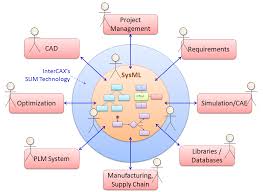Operational Technology in Transport: Enhancing Safety and Efficiency

In the modern transport industry, Operational Technology (OT) plays a pivotal role in ensuring safe, efficient, and reliable operations. OT refers to the hardware and software systems used to monitor and control physical processes, including traffic management, railway signaling, and automated transport systems. As transportation networks become increasingly digital, the integration of OT with Information Technology (IT) is revolutionizing the way transport systems operate.
Understanding OT in Transport

OT encompasses a wide range of technologies, including:
- Supervisory Control and Data Acquisition (SCADA) Systems: Used for monitoring and controlling transport infrastructure such as railways, tunnels, and bridges.
- Railway Signaling and Control Systems: Ensuring safe train operations through technologies like European Train Control System (ETCS) and Communications-Based Train Control (CBTC).
- Traffic Management Systems (TMS): Optimizing road and rail traffic flow through sensors, cameras, and adaptive control mechanisms.
- Industrial Control Systems (ICS): Automating operations in transport facilities such as ports, airports, and logistics hubs.
Key Benefits of OT in Transport
- Improved Safety: OT enhances operational safety by enabling real-time monitoring, automated incident response, and predictive maintenance.
- Enhanced Efficiency: Intelligent transport systems leverage OT to optimise traffic flow, reduce delays, and improve energy consumption.
- Predictive Maintenance: By using data analytics and IoT sensors, OT helps identify potential failures before they lead to service disruptions.
- Integration with IT Systems: The convergence of OT and IT enables better data-driven decision-making, allowing transport authorities to enhance operational planning.
- Cybersecurity Considerations: As OT systems become connected, protecting them against cyber threats is critical to ensuring operational continuity.
Challenges in Implementing OT in Transport
- Legacy System Integration: Many transport systems rely on outdated OT infrastructure, requiring careful modernization efforts.
- Cybersecurity Risks: Increased connectivity exposes transport networks to cyber threats, necessitating robust security measures.
- Interoperability Issues: Ensuring seamless communication between different OT systems and vendors remains a challenge.
- High Implementation Costs: Deploying and maintaining OT solutions requires significant investment in both hardware and expertise.
Future Trends in OT for Transport
- Digital Twins: Virtual models of transport infrastructure enable better planning, monitoring, and predictive analytics.
- Edge Computing: Reducing latency and improving real-time decision-making for transport operations.
- AI and Machine Learning: Enhancing traffic forecasting, predictive maintenance, and autonomous transport systems.
- 5G Connectivity: Enabling faster and more reliable communication between OT devices.
Conclusion
Operational Technology is at the core of modern transport systems, driving efficiency, safety, and innovation. As transport networks continue to evolve, integrating advanced OT solutions will be essential for meeting future demands. However, addressing cybersecurity challenges, ensuring system interoperability, and investing in modernization will be key to fully unlocking the potential of OT in transport.